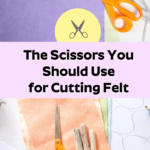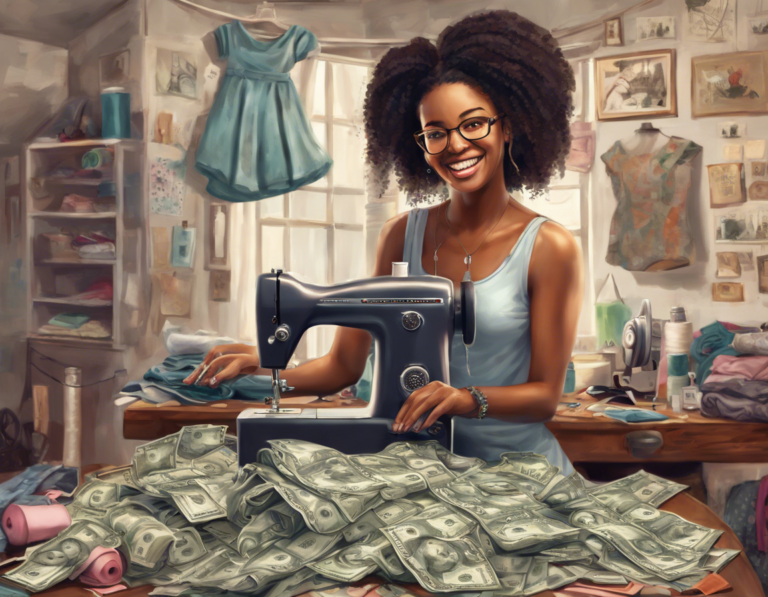Best Scissors to Cut Felt: What Cutting Tools to Use
When choosing scissors to cut felt, it is important to realize that felt fabric is unlike other woven fabrics. Choosing a good pair of scissors for your felt crafts is important to get the best results and prevent frustration!
In our Ultimate Guide to the Best Scissors for Cutting Felt we will explain what the unique types of scissors are and the best choice for your felt crafting projects.
In this list of the best felt scissors, we break down the most important tools, as well as the nice-to-haves so you don’t spend more money than needed to set up your sewing kit.
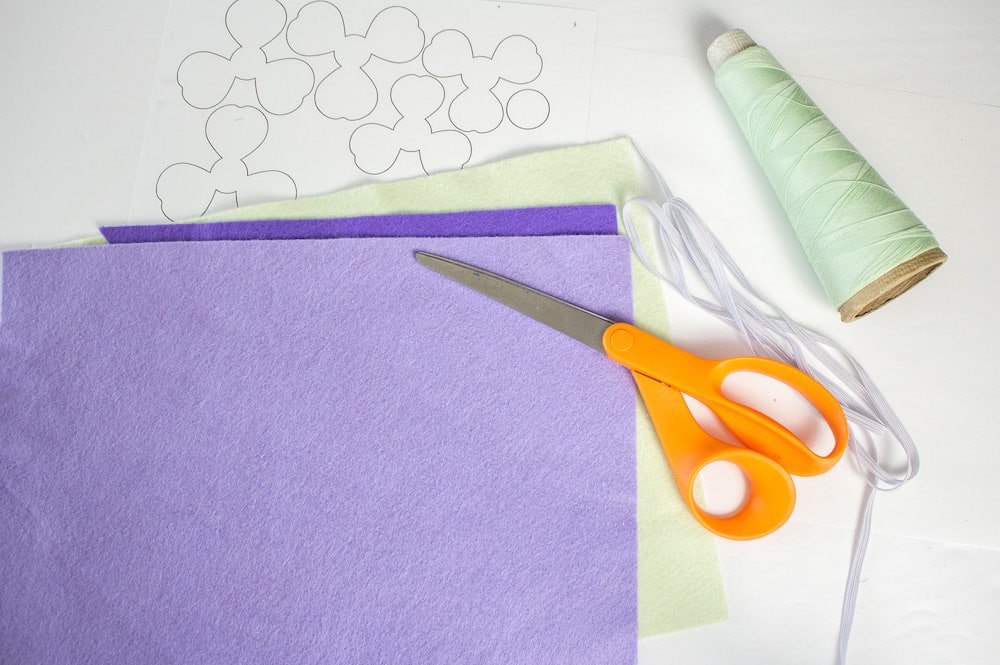
You will also want to see our Guide to the Best Scissors for Sewing.
Fabric Scissors
Perhaps the most important pair of scissors you can own is general fabric scissors!
These pairs of scissors usually have a bent handle, but not always.
Fabric scissors are very similar to dressmaker shears or tailor shears. Often called sewing scissors or sewing shears, all of these types of scissors have sharp blades designed for cutting fabric or felt.
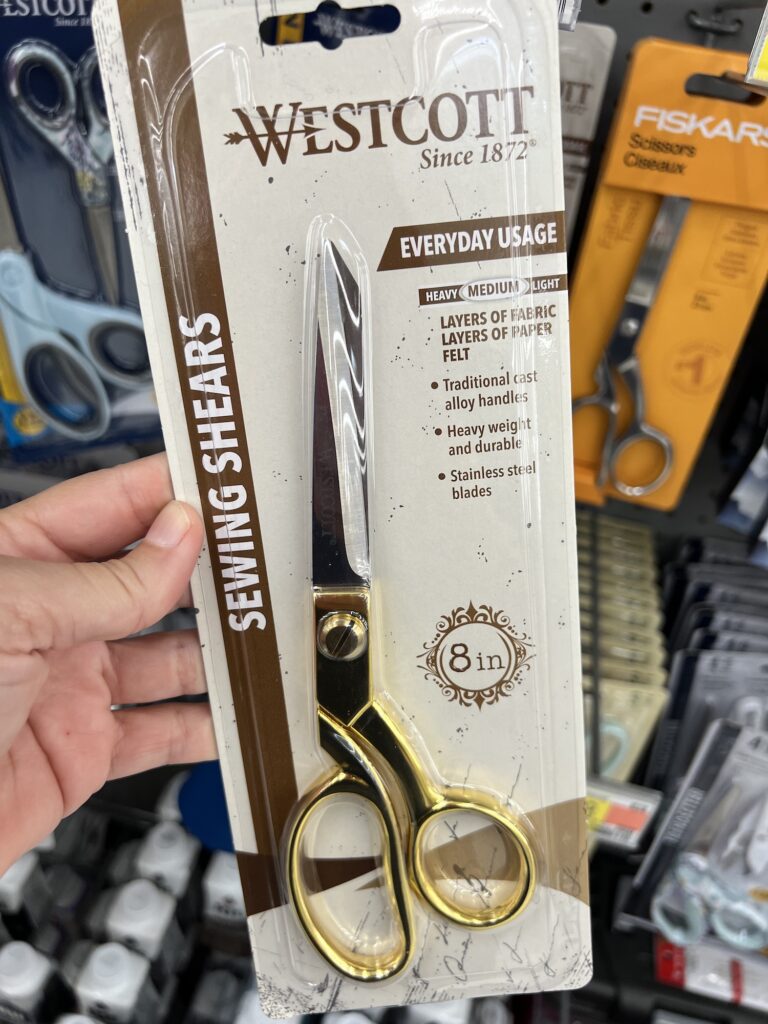
Investing in a pair of high quality fabric shears with stainless steel blades can be a smart decision, as they are likely to last you a lifetime and are the best way to get clean cuts. They won’t rust and they can be sharpened.
While all modern blades are almost always stainless steel, many handles are not. If you want a true buy-it-for-life pair of scissors, get ones with stainless steel handles, too.
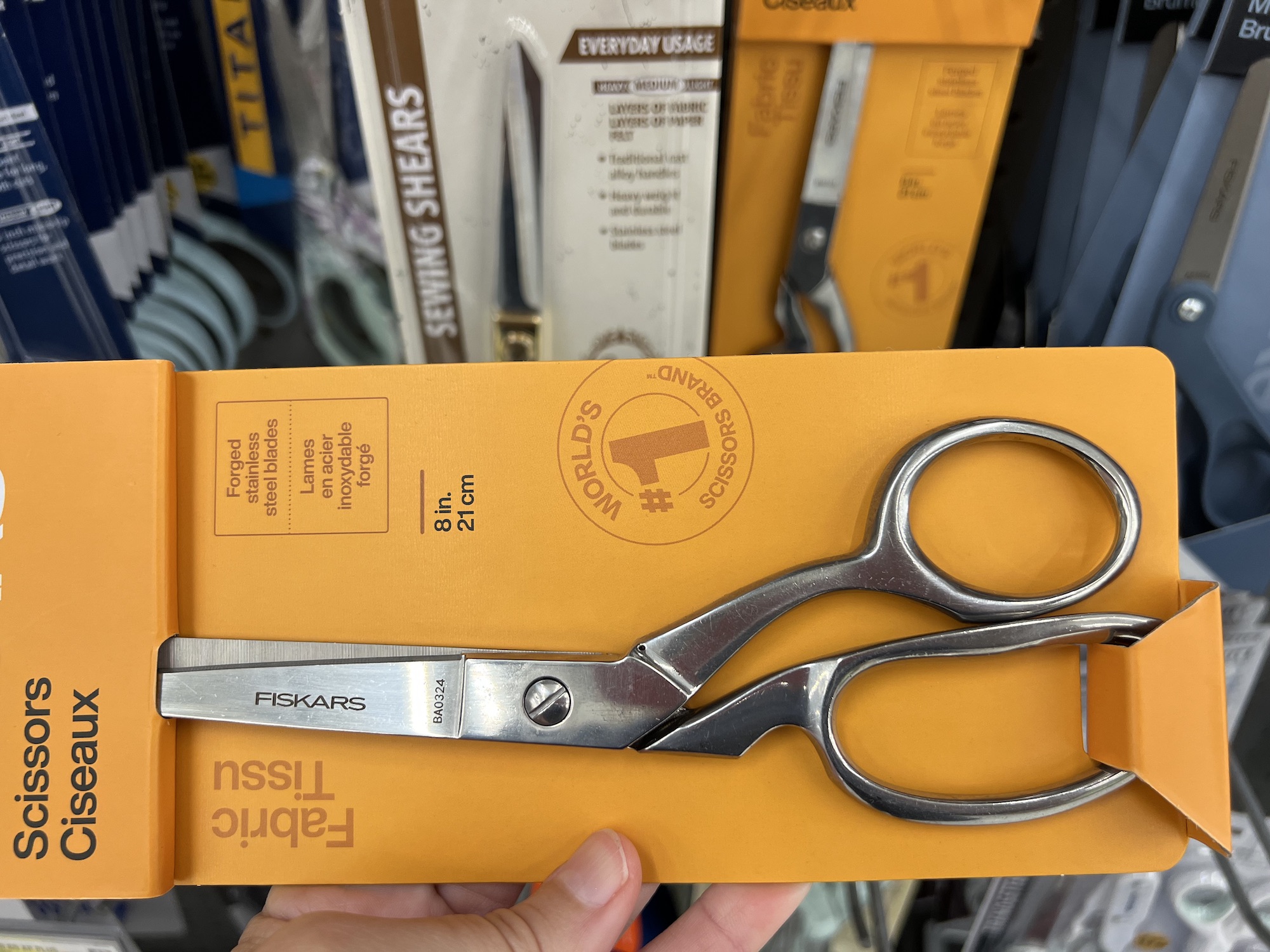
However, comfort is also important, because these are going to be one of the most essential tools you have. Soft-grip handles can really make a difference in hand fatigue.
I personally prefer using soft grip handles rather than stainless steel ones.
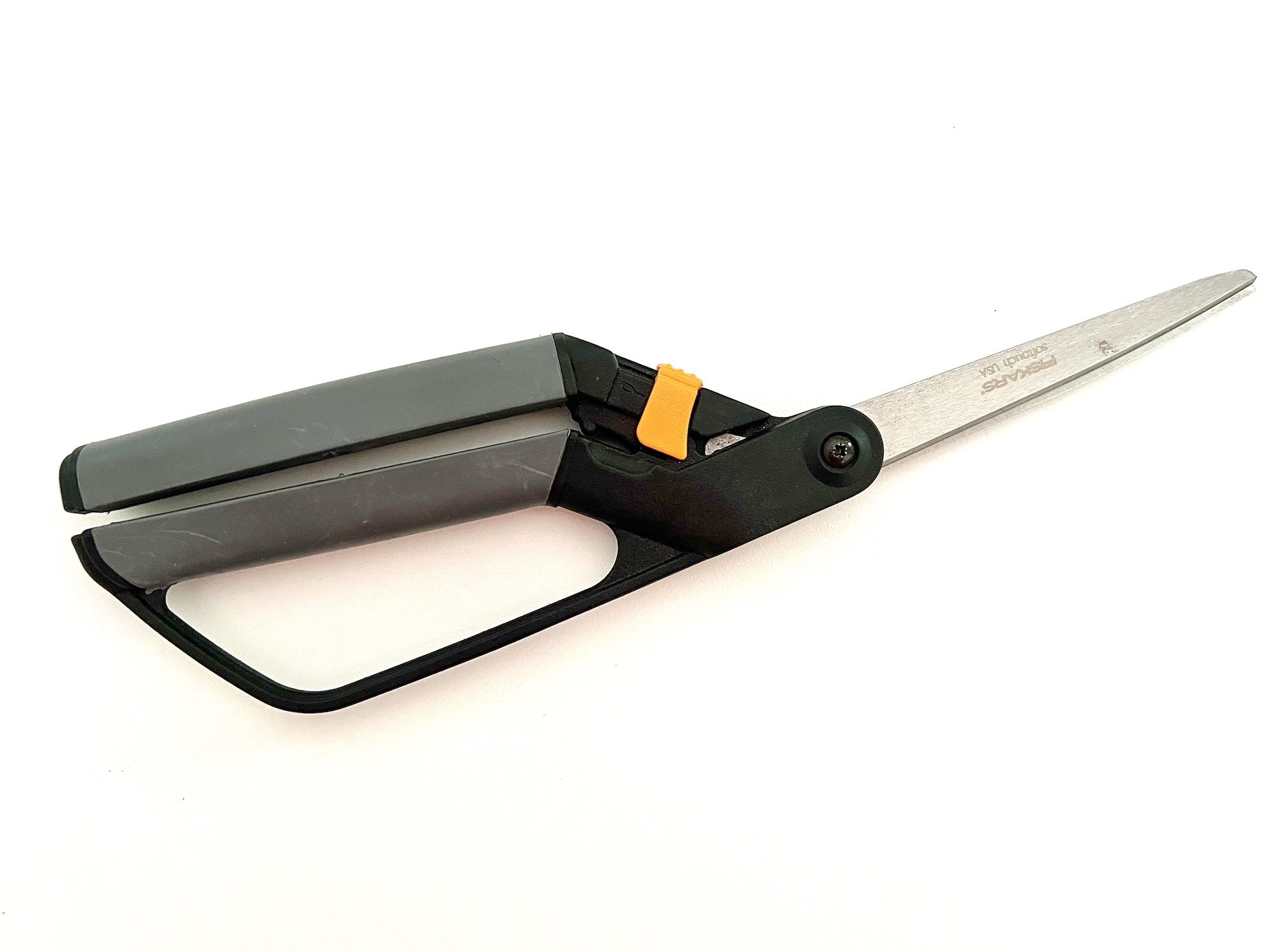
These Fiskars Easy Grip Shears are the fabric scissors I have used for two decades and definitely recommend! (Also on Michaels)
Left Handed Fabric Scissors
If you are left handed, you will be thrilled to know that there are left-handed scissors specifically made with you in mind!
Always buy a pair of scissors for your dominant hand!
General All-Purpose Scissors
Yes, you can use normal scissors to cut felt. And they will cut through the fabric.
However, using regular scissors won’t give you the most detailed cuts, are difficult to use when cutting small pieces and the felt edges could be frayed or uneven.
These paper scissors are fine for cutting out pattern pieces and paper templates because those are important parts of making felt projects, too.
I buy these 3-packs of scissors and have been really happy with their performance and price. I also like the colors they come in!
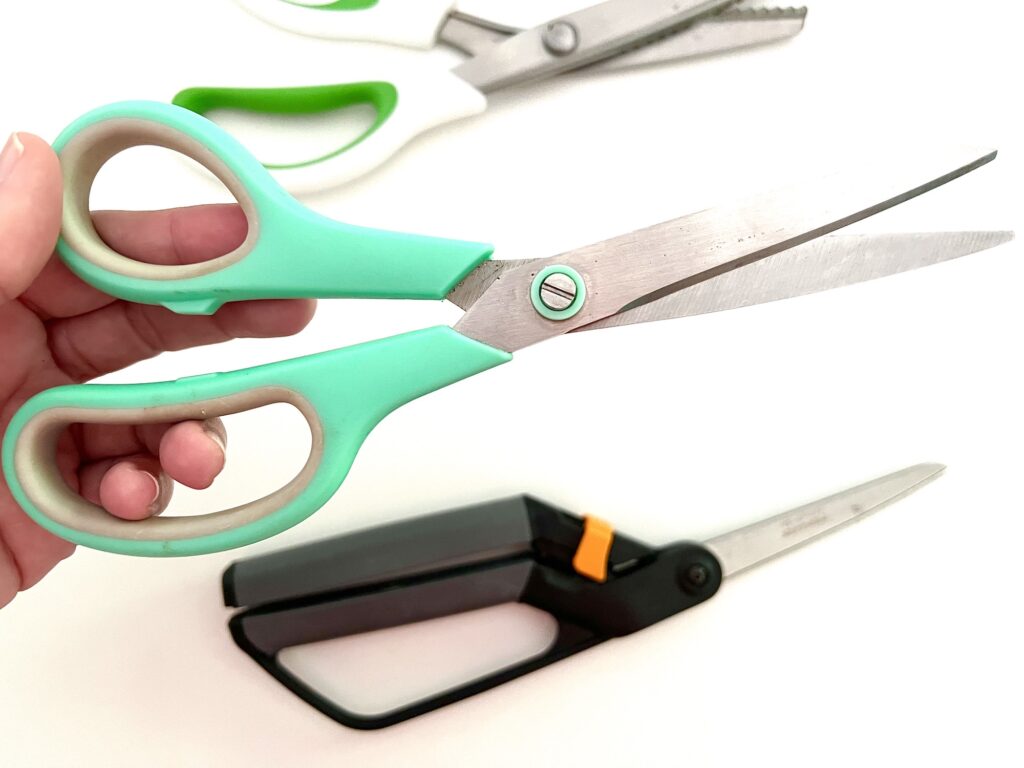
Pinking Shears
Pinking shears are the “zig zag” scissors that create a decorative edge.
These zig-zag scissors have a serrated edge on each blade. Some have a scalloped edge instead.
I use these pinking shears and you will probably see them in a lot of my video tutorials!
Felt can leave a lot of little fibers behind on the pinking shears, which can be tedious to wipe off before using them with another project.
An easy way to remove the debris is to spray the blades with compressed air to quickly remove the fibers.
Felt also dulls scissors faster than fabric and pinking shears are expensive (and difficult) to sharpen so you will probably need to replace your pinking scissors if you use them quite often.
Pinking shears are always very heavy for some weird reason, and even with the comfort grips on mine, I find myself having to take a rest after cutting large amounts of felt with these scissors.
Rotary Cutter
Rotary cutters look like pizza cutting scissors.
For cutting straight lines, rotary cutters can make clean and precise cuts. These cutting tools are used with self healing cutting mats and acrylic rulers to quickly cut straight edges.
To use, place felt on a self healing cutting mat and roll the rotary blade along the side of the plastic ruler.
There are even rotary pinking blades that can be used for a decorative edge.
We suggest only cutting one piece of felt at a time.
Rotary cutter blades need to be extremely sharp, and they often need to be replaced. It is really important to store these scissors safely!
Embroidery Scissors
When you need to do fine details or precision work, you want a pair of embroidery scissors. Trust me.
I put off buying a pair of these tiny scissors for quite a while. I don’t know why, because they cost less than $10 so they are not a huge investment.
Once I got my embroidery scissors (I chose a pair that looks like a bird and makes me laugh every time I use them!), I knew why everyone makes such a fuss about getting a pair of these smaller scissors!

These very small scissors with a sharp tip are a great option for cutting tight corners or intricate details.
If you need precise cuts in small areas, these are the scissors you need!
They are also a favorite to keep in a sewing kit or sewing bag because they are so small.
Die Cut Machine
When you want very intricate details, a die cut machine such as Cricut Maker can make very intricate cuts that you might not otherwise be able to do with detail scissors.
Our Felt Flower Book Band is a great example of using a Cricut Maker to cut felt. (You can also use a paper template, too.)
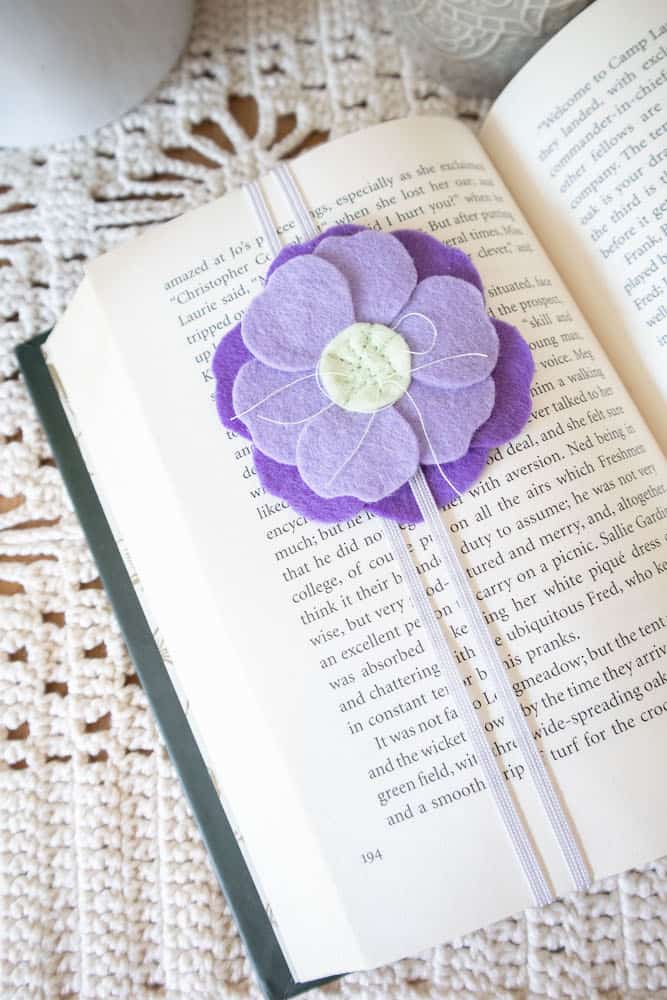
Scissors vs. Shears
Yes, there is a difference between “scissors” and “shears.”
Scissors
- Shorter blades
- Equally sized finger holes
- Can be used as all purpose scissors in the household
Shears
- Longer blades
- The long blade is usually more than six inches long
- Heavier
- Finger holes in two different sizes, smaller hole for your thumb and larger hole for fingers
- Sharper than general scissors

Best Sewing Scissor Brands
The best sewing scissors are the ones that fit your hand the best, have a comfortable grip and are in your budget.
However, if you are making an investment in an heirloom quality brand of scissors, these are some of the brands we use and recommend:
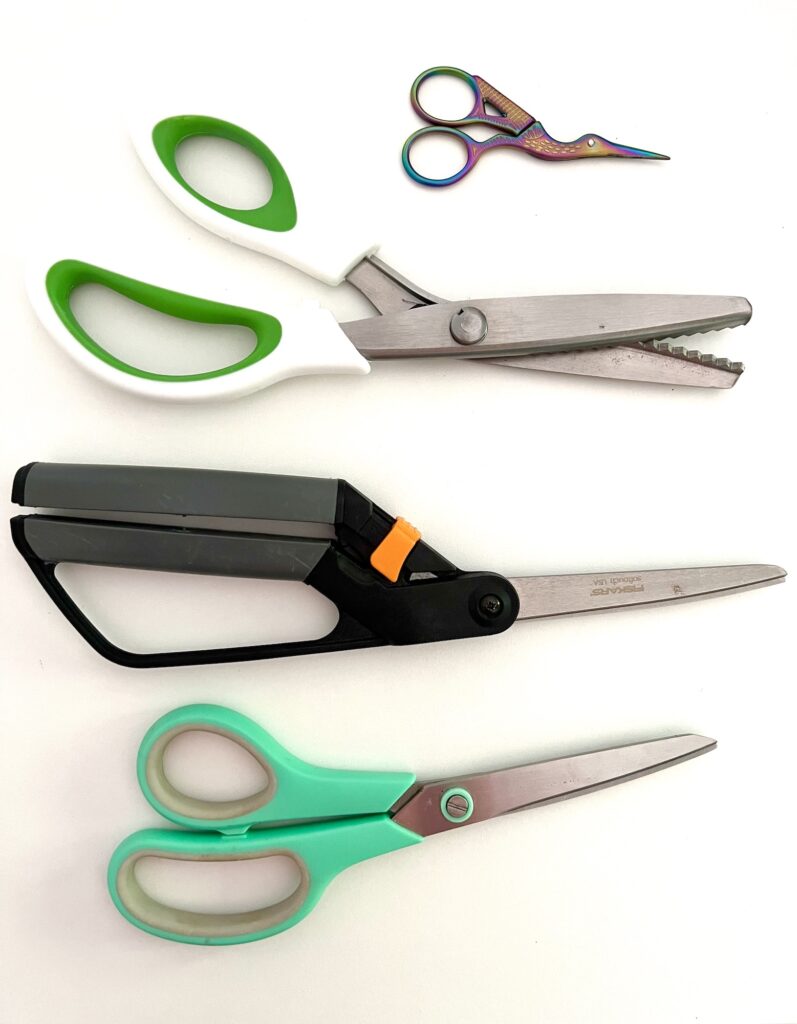
How to Care For Your Sewing Scissors
Always keep your scissors clean. If you cut through fabric with lots of fibers that stick to your blades, be sure to wipe off the blades promptly so that they fibers don’t get in the screw.
If you cut through something that is sticky or tacky, such as glue or adhesive, quickly wipe off the blades to remove residue.
Always keep your scissors dry. Do not store them in a damp environment.
Sharpen your scissors regularly.
Scissor Rules
- Never use your sewing scissors on anything other than fabric, felt or thread! If you use them to cut paper or patterns you could dull the sharp blades. Even using fabric scissors on paper products every once in a while can really dull the scissors, which means you will need to buy new ones or sharpen them more frequently.
- Only use the right kind of scissors for the right kind of project. Don’t use embroidery scissors to cut patterns out. Don’t use fabric scissors to cut out patterns.
- Be careful with how you store your sewing scissors because they are so sharp! You do not want to reach into your sewing basket and get cut or stabbed with the sharp scissors!
How To Sharpen Scissors
Scissors will get dull over time, but that doesn’t mean that you have to get rid of them!
Thankfully, it is easy to sharpen sewing scissors in a variety of ways, including:
- Scissor Sharpener
- Sharpening Stone
- Knife Block with a Sharpener
- Take to a Blacksmith / Knife Sharpener
Sharpening your scissors, rather than buying a new pair, saves a lot of money if you are using a quality pair of scissors. These sharpening tools usually cost less than a new pair of scissors!
Not only is it budget friendly, but it can also save you frustration, too.
Sewists get used to the weight and feel of their scissors because they use them so often! Switching to a new pair can lead to aggravation because you need to learn the unique feel of the blades and how they cut.
The only exception is pinking shears. With all of the little triangle shaped blades, it would be a nightmare trying to sharpen them. Just buy a new pair instead.
And as we said before, rotary cutter blades are not meant to be used forever. They are designed to be replaced (which really increases the lifetime cost of using these cutters).
While you can buy tools such as a sharpening stone or scissor sharpener to use at home, you may not feel comfortable sharpening the blades.
In that case, look for knife sharpening professionals. Your local sewing or quilting shop will likely have the name of someone who provides this service. You may also want to ask at your local fabric shop, such as JoAnn Fabrics, to see if they know of someone local.
In my area, a local blacksmith also does scissor sharpening for $15 or less. That’s a great investment to take care of a pair of heirloom scissors.
Do NOT use sandpaper or aluminum foil to sharpen scissors used for sewing. Just don’t.
These “hacks” will only dull your scissors and they could mess up your scissors so that you can’t cut fabric smoothly and easily.
Save this list of best sewing scissors to Pinterest to reference later!
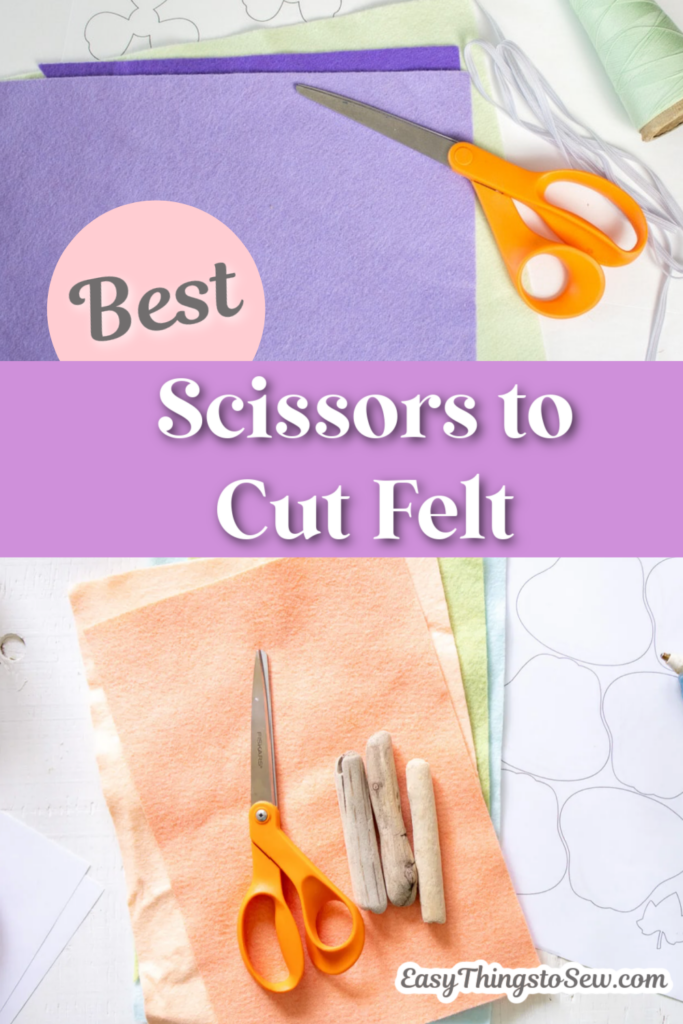
Buying the right pair of scissors is just one of the essential beginner sewing tips you need to know.
See these sewing guides next:
- What Are Sewing Notions (and Which Ones Do You Really Need?)
- Ultimate Guide to Interfacing
- How (and When) to Prewash Fabric
- Where to Find Inexpensive Fabric for Sewing Projects
- How to Sew Rick Rack

